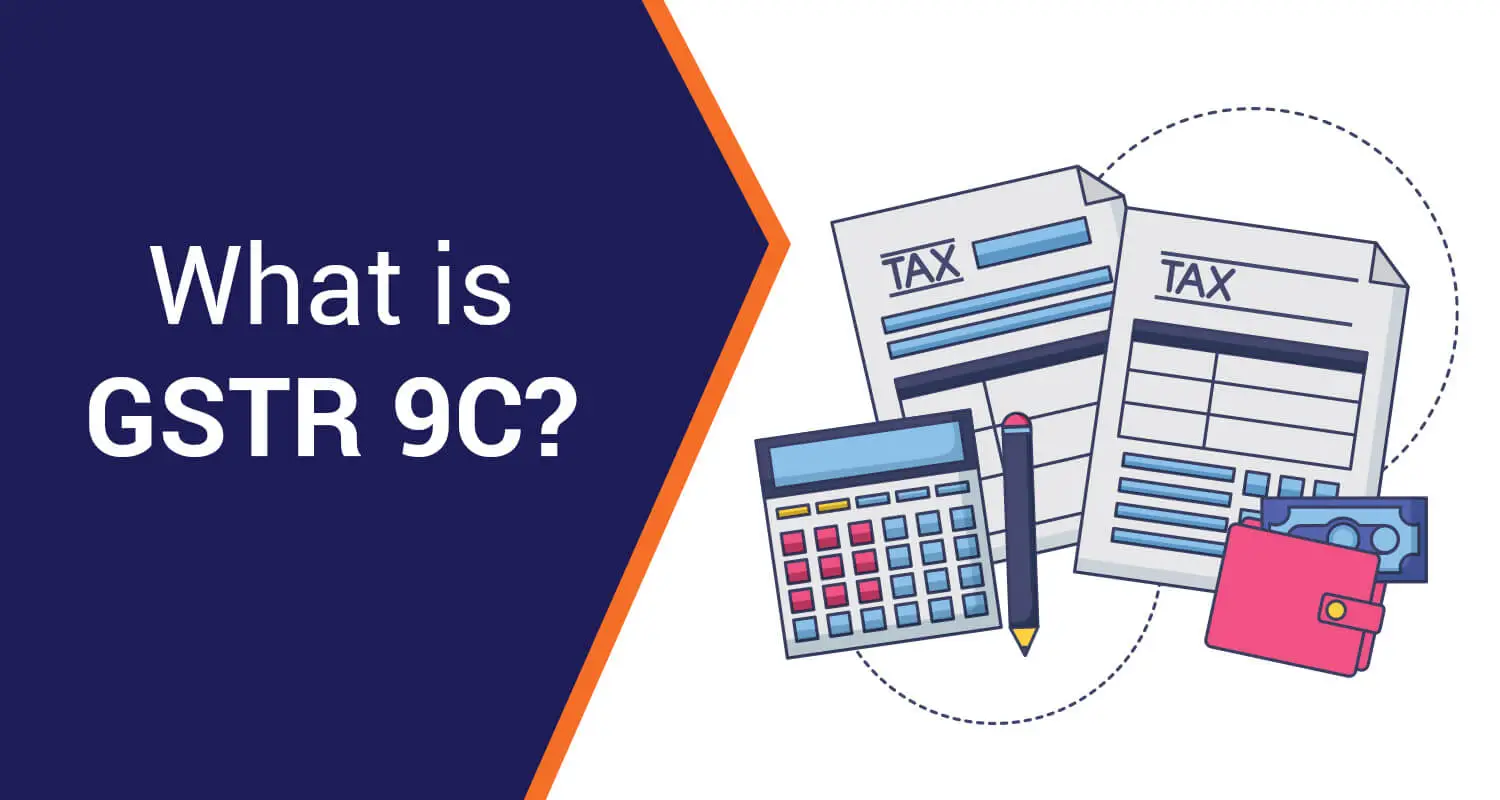GSTRC 9C: Meaning, Features & Types

The registered taxpayers must follow certain compliance procedures under the Goods and Services Tax (GST) system. One important thing is filing the GSTR 9C, an annual reconciliation statement. This article explores what GSTR 9C is, its features, benefits, and how it works.
What is GSTR 9C?
GSTR 9C is a statement that connects a taxpayer's yearly GST return (GSTR 9) with their audited financial statements for a specific financial year. It aligns the numbers declared in GSTR 9 with the financial details in the audited accounts, ensuring correct and consistent tax reporting.
Features of GSTR 9C
- Mandatory for Specific Taxpayers: Only registered taxpayers with an aggregate annual turnover exceeding Rs. 5 crore are required to file GSTR 9C.
- Reconciliation of Figures: The statement compares the values reported in GSTR 9 with the corresponding figures in the audited financial statements, identifying any discrepancies or variations.
- Self-certification: Unlike earlier regulations, GSTR 9C no longer requires certification from an auditor. Instead, an authorized person within the taxpayer's organization can self-certify the statement.
- Submission with Supporting Documents: GSTR 9C must be filed online, along with a copy of the audited financial statements and the GSTR 9 return for the relevant financial year.
Benefits of GSTR 9C
- Enhanced Transparency: GSTR 9C fosters transparency in tax reporting by ensuring that the figures declared in GST returns align with the audited financial statements.
- Reduced Discrepancies: By identifying and reporting any discrepancies between the two sets of figures, GSTR 9C helps minimize potential errors and inconsistencies.
- Improved Compliance: Filing GSTR 9C demonstrates a taxpayer's commitment to adhering to GST compliance requirements.
- Early Detection of Issues: The reconciliation process can help taxpayers identify potential tax liabilities or compliance issues early on, allowing for timely corrective action.
Sapna aapka. Business Loan Humara.
Apply NowTypes of GSTR 9C
There are no different types of GSTR 9C forms. However, the reconciliation statement can be categorized based on the specific discrepancies identified during the comparison process:
- Nil Reconciliation Statement: If no discrepancies are found between the GSTR 9 and audited financial statements, a nil reconciliation statement can be filed.
- Reconciliation Statement with Discrepancies: If discrepancies are identified, the statement must detail the variations, their reasons, and any necessary adjustments.
How does it Works?
The GSTR 9C filing process involves the following steps:
- Preparation: The taxpayer gathers the necessary information from their GSTR 9 return and audited financial statements.
- Reconciliation: A thorough comparison is conducted between the figures in both documents to identify any discrepancies.
- Statement Preparation: Based on the reconciliation process, the GSTR 9C statement is prepared, outlining the reconciled figures and any identified variations.
- Self-certification: An authorized person within the taxpayer's organization self-certifies the GSTR 9C statement.
- Online Filing: The statement is submitted online on the GST portal along with the required documents.
Conclusion
GSTR 9C plays a vital role in ensuring the accuracy and consistency of GST reporting for businesses with a significant turnover. By facilitating reconciliation between GSTR 9 and audited financial statements promotes transparency and helps identify potential compliance issues. Understanding the purpose, features, and filing process of GSTR 9C is crucial for taxpayers to fulfill their GST obligations effectively.
FAQs
Q1. What is GSTR 9C?
Ans. GSTR 9C is an annual reconciliation statement filed by registered taxpayers under the GST regime. It compares the figures declared in their GSTR 9 annual return with the corresponding figures in their audited financial statements for a specific financial year. This helps ensure accuracy and consistency in tax reporting.
Q2. Who needs to file GSTR 9C?
Ans. Only registered taxpayers with an aggregate annual turnover exceeding Rs. 5 crore are obligated to file GSTR 9C. This requirement does not apply to government entities whose accounts are audited by specific authorities.
Q3. What are the benefits of filing GSTR 9C?
Ans. GSTR 9C enhances transparency by aligning GST returns with financial statements, reducing discrepancies and potential errors in tax reporting. Filing GSTR 9C signifies a taxpayer's dedication to meeting GST compliance requirements, while its reconciliation process enables early detection of tax liabilities or compliance issues, facilitating prompt corrective actions.
Q4. How is GSTR 9C different from GSTR 9?
Ans. While GSTR 9 is the annual GST return, GSTR 9C acts as a reconciliation statement, specifically comparing the information in GSTR 9 with the audited financial statements.
Q5. What is the process for filing GSTR 9C?
Ans. The process involves:
- Preparing the statement by comparing GSTR 9 and audited financial statements.
- Identifying and reporting any discrepancies.
- Self-certifying the statement by an authorized person within the taxpayer's organization.
- Online filing on the GST portal along with supporting documents like audited financial statements and GSTR 9 return.
Sapna aapka. Business Loan Humara.
Apply NowDisclaimer : The information in this blog is for general purposes only and may change without notice. It does not constitute legal, tax, or financial advice. Readers should seek professional guidance and make decisions at their own discretion. IIFL Finance is not liable for any reliance on this content. Read more



